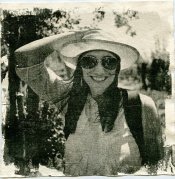analoguey
Member
retouching and cleaning is certainly an option but how many negatives are we discussing and what are the expectations of the owner?
One thing to remember is that these negatives reflect their story -- all those floods and moves and so on. Does he want presentation images, or just visible memories?
12.
Basically what I have mentioned to him is that we can see the contacts of those images and one blow-up and decide which way to go, post that!
Is he willing to pay for the amount of time that would take, if this is a cash deal? If not a cash deal, how much strain can your friendship stand while you do this for free?
All things to consider.
Thank you for those excellent questions - some that I had thought but not articulated.
Depending on the numbers of negs and amount of time you are willing to spend, I'd say brush them off, wash off the worst of the goo if applicable, make the best prints you can, and let any final defects be proof of their genuine status as survivors of the 50 years on this planet.
I'll do that. I have been trying to upload snaps of a couple of the 8x10s but Flickr's been petulant.
I could put some glass *on* the negative. Not so sure if it's best idea. I'll try that.If there is enough space between your lower condenser and the top of the negative carrier you can introduce your own diffusion.
Simply get a bit of opaque heat resistant perspex and cut it to fit and then tape in place with electrical tape.
Not pretty but it works and could remove a lot of your problems.
Bests,
David.
www.dsallen.de
Hopefully, I can put up couple of shots of the prints to illustrate what I'm referring to, better.












